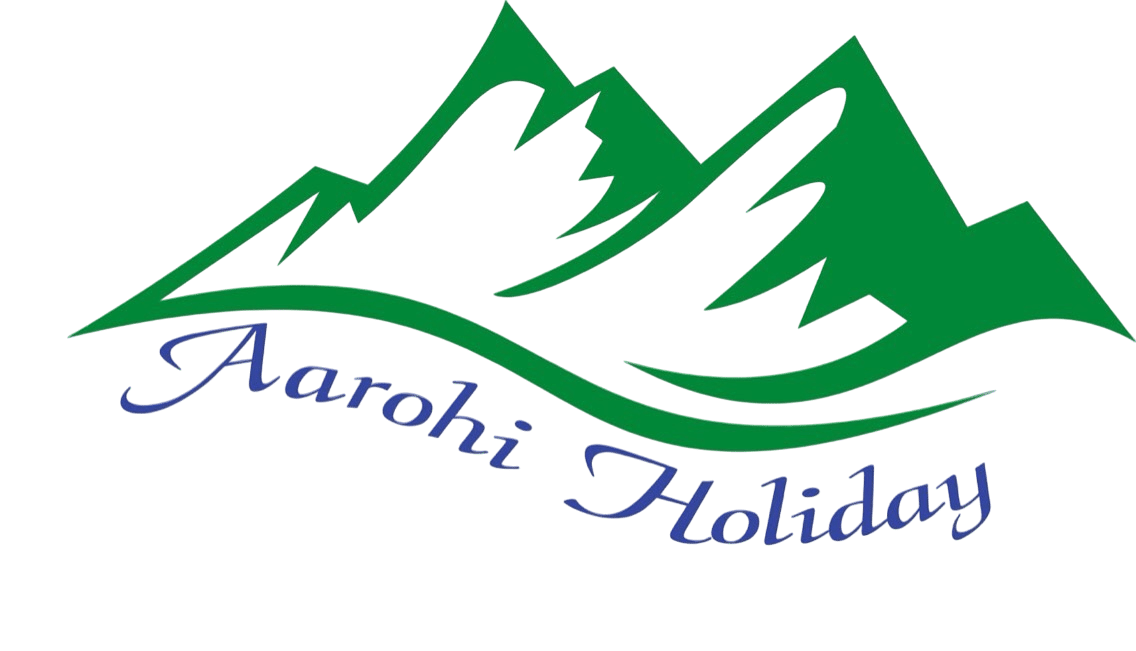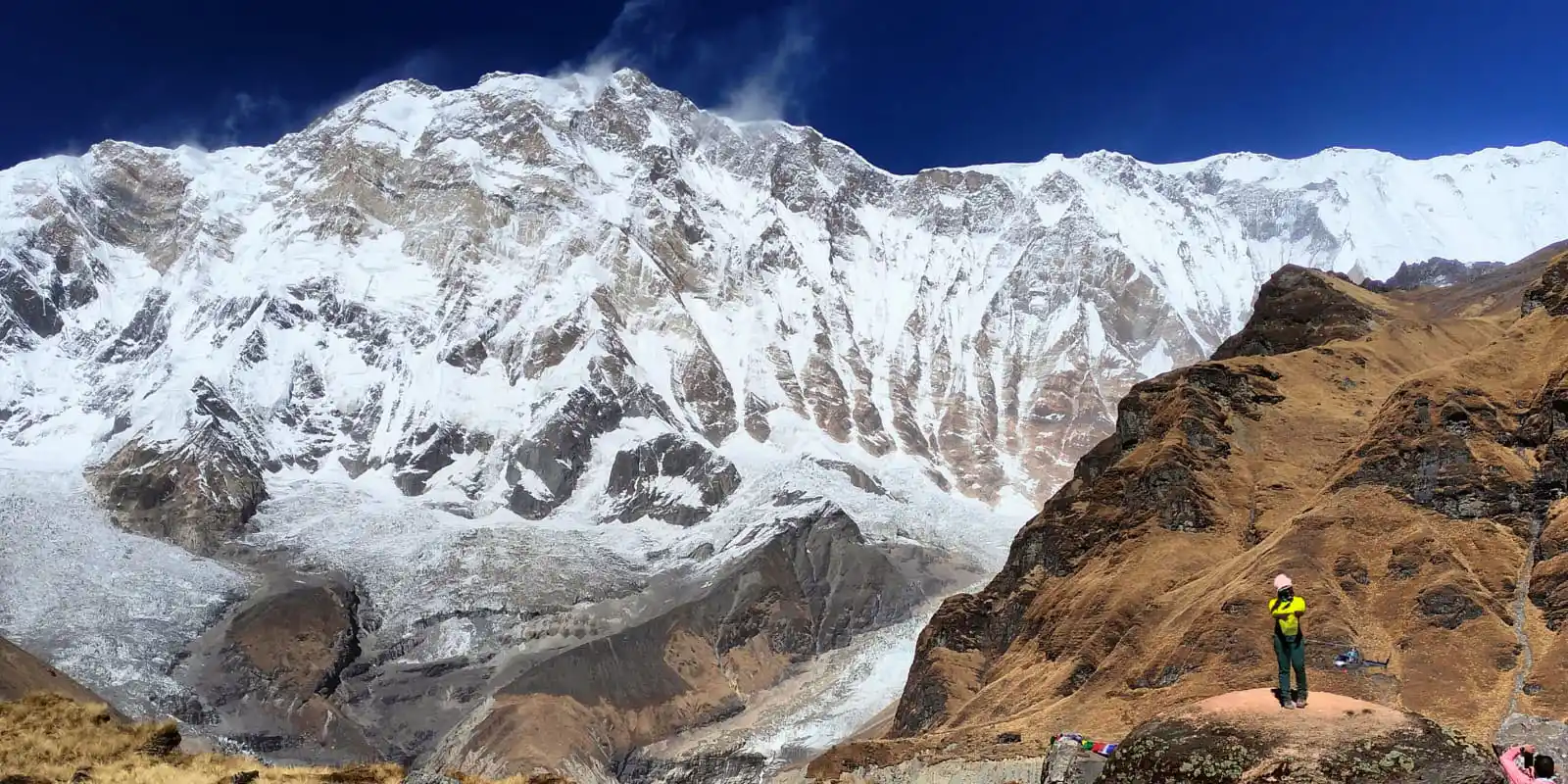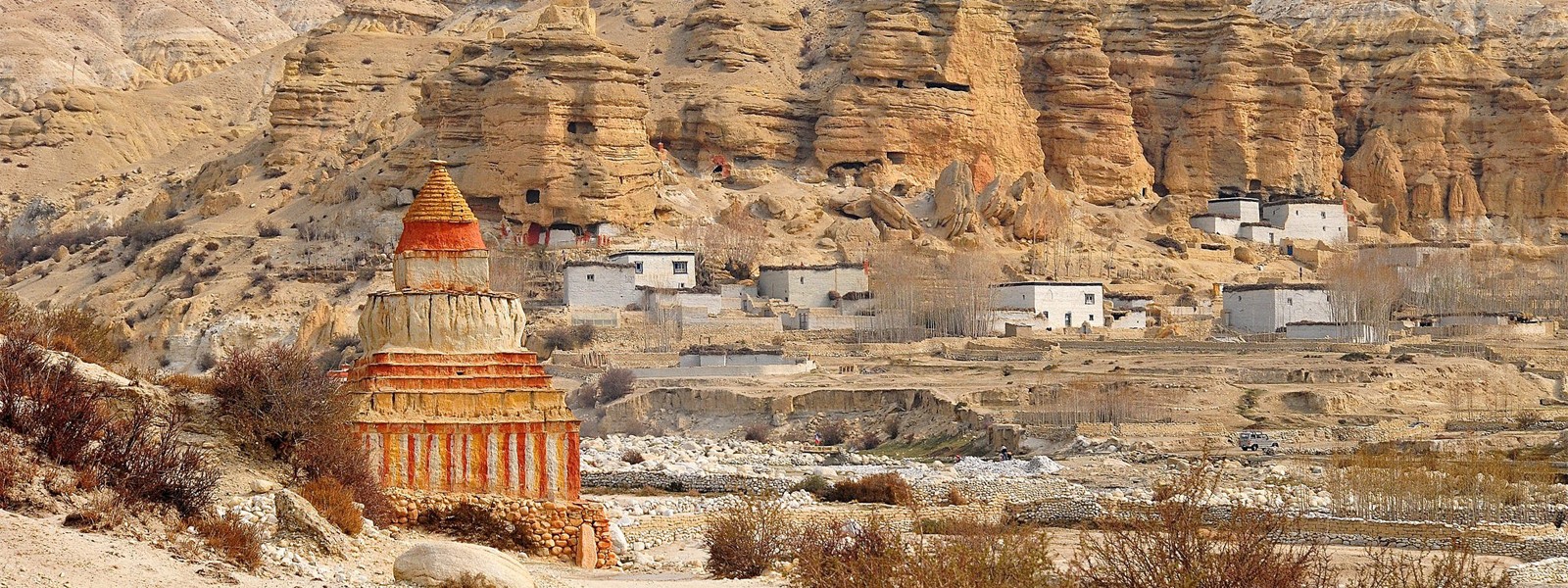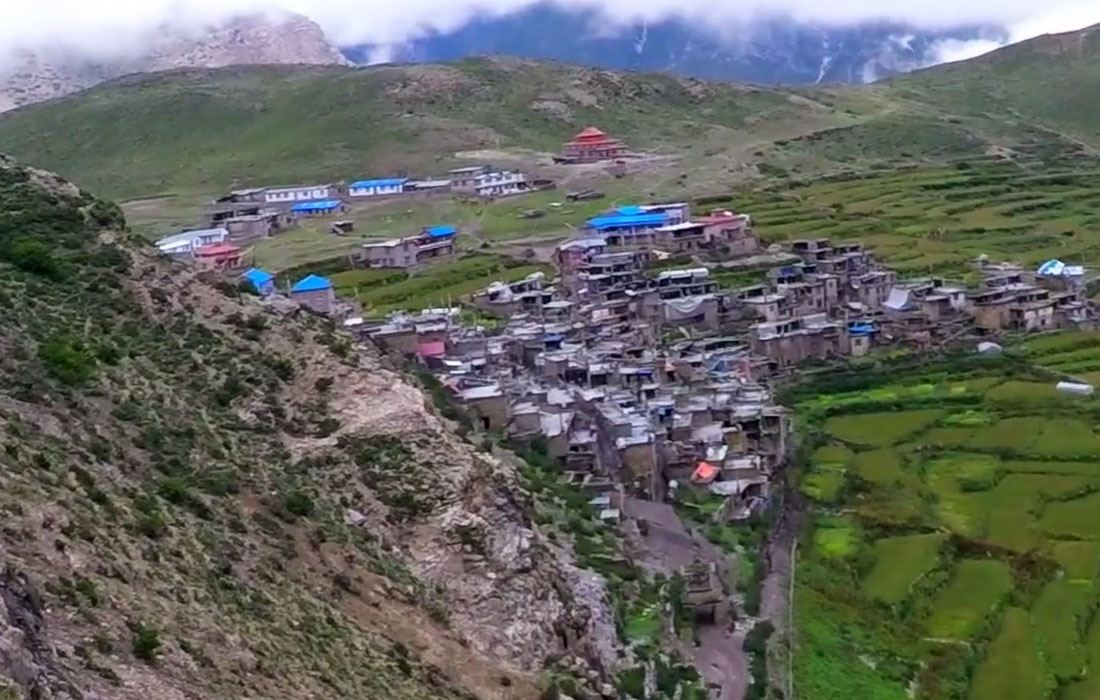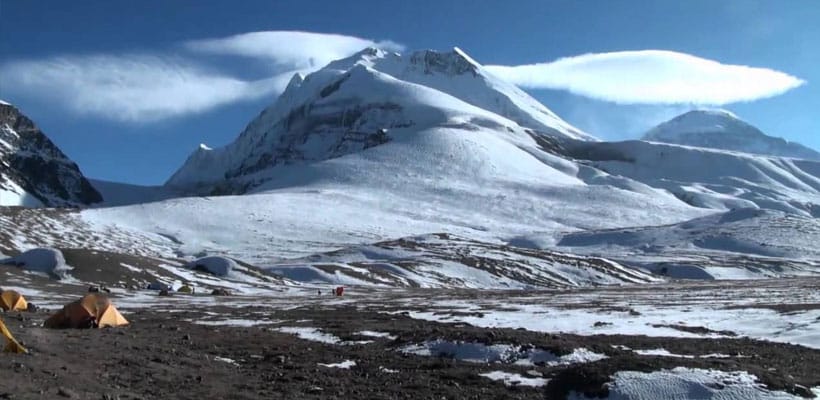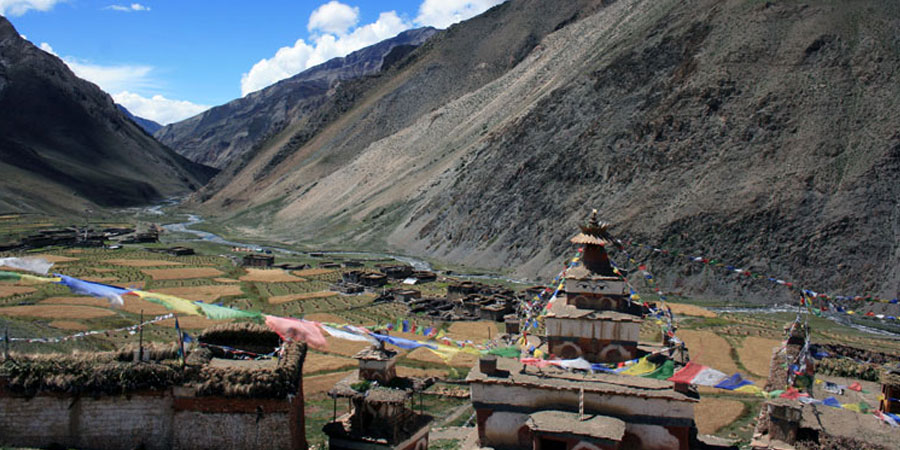US $850
Upper Mustang Trek Overview
Upper Mustang Trek, also well-known as Lo-Manthang Trekking, offers a unique opportunity to experience the fantastic beauty of the Himalayan desert and its unusual landscape. The Upper Mustang Trek covers the northern two-thirds of the Mustang district in the Dhaulagiri Zone of Nepal. The main attraction of the Upper Mustang Trek is the walled city of Lo-Manthang. This trek includes visits to natural caves, chortens, monasteries, palaces, and alpine villages with friendly Bhotiya people.
The Upper Mustang Trek consists of two distinct regions: the southern part and the northern part, where the language, culture, and traditions are similar to those of the Tibetan people. The Upper Mustang trek was opened to foreigners in 1992. The trek to Lo-Manthang takes you through high-altitude desert country, climbing in and out of the massive-sided valley of the Kali Gandaki.
During this Upper Mustang Trek, you’ll witness magnificent views of mountains and peaks along the trek, with the chance to reach the world’s deepest river gorge in the Kali Gandaki River. The trek also includes a holy pilgrimage to Muktinath, a sacred place for both Hindu and Buddhist followers, as well as exploring the Lo-Manthang valley, Kagbeni village, and encountering a variety of flora and fauna, among other rewarding experiences.
We begin our 17-day excursion in Kathmandu with visits to UNESCO World Heritage sites before heading to the most popularly known Mustang Trekking. We offers an ideal budget package trip to Mustang at the best cost, making your trip memorable.
Route to Upper Mustang Trek
Your Upper Mustang Trek begins with your arrival in Kathmandu (1,350m), where our team will welcome you at Tribhuvan International Airport and assist with your hotel transfer. After a cultural sightseeing tour of the Kathmandu Valley’s UNESCO World Heritage Sites, you’ll drive to Pokhara (900m), Nepal’s beautiful lake city. The next morning, a short scenic flight takes you to Jomsom (2,720m), the gateway to Mustang, from where you’ll begin trekking toward Kagbeni (2,858m), the official entry point to Upper Mustang.
From Kagbeni, the trail follows the Kali Gandaki River and climbs gradually through unique desert-like landscapes and ancient settlements. Passing villages such as Chele (3,050m), Syangbochen (3,475m), and Ghaymi (3,520m), you’ll experience traditional Tibetan culture, visit monasteries, and walk past mani walls and chortens. Continuing through Charang (3,500m), the trail leads to Lo-Manthang (3,700m), the walled capital of Upper Mustang, where you’ll spend a day exploring palaces, monasteries, and caves rich in history.
The return journey follows a different scenic route via Drakmar (3,810m), Ghiling (3,806m), and Chhuksang (3,050m), before reaching Jomsom once again. From there, you’ll fly back to Pokhara and drive to Kathmandu, where your trek concludes with a final overnight stay before departure. This route offers a perfect blend of Himalayan adventure, cultural exploration, and the rare opportunity to walk in the hidden kingdom of Mustang.
Why Choose Us for Your Upper Mustang Trek?
The Upper Mustang Trek is a unique journey into Nepal’s hidden kingdom, offering breathtaking landscapes and rich cultural experiences. With many trekking agencies to choose from, here’s why Aarohi Holiday is the right choice for your Upper Mustang adventure:
- As a government-registered local tour operator, Aarohi Holiday possesses in-depth knowledge of regional trails and employs a team of skilled local guides dedicated to ensuring your safety during the trek
- Upon booking confirmation, you’ll receive a comprehensive online trip briefing to help you prepare for your trek and maximize your adventure.
- Aarohi Holiday provides a user-friendly and secure booking and reservation system, offering multiple payment options for your convenience.
- Aarohi Holiday arranges private vehicle pick-up and drop-off at the airport, ensuring a seamless and stress-free beginning and end to your trip.
- During your trek, Aarohi Holiday offers 24/7 support through phone and email for any assistance you may need.
- Aarohi Holiday provides transparent, competitive pricing with no hidden fees, along with complimentary medical kits and free excess luggage storage for your convenience.
- By choosing Aarohi Holiday, you’ll contribute to supporting local communities and their livelihoods through sustainable tourism.
Upper Mustang Trek– 2025/26 Group & Private Options Available
The Upper Mustang Trek is a captivating journey into Nepal’s hidden desert kingdom, where ancient Tibetan culture and stunning arid landscapes await. Ideal for adventurers craving a unique, off-the-beaten-path experience, we offer both fixed departure group treks and fully guided private options tailored to your travel preferences.
Group treks (2–12 people) let you connect with like-minded explorers, sharing the magic of Mustang’s rugged beauty, while private treks offer complete freedom to set your own pace and itinerary. Bookings are now open for our 2025 departures, with early reservations available for 2026 to lock in your ideal dates and plan your adventure with confidence.
Upper Mustang Trek Alternatives
The Upper Mustang Trek ventures into a restricted, culturally vibrant region with breathtaking desert landscapes and ancient Tibetan heritage. For alternative adventures, consider the Lower Dolpo Trek, which offers a similar remote and culturally rich experience, or the Annapurna Circuit Trek, known for its diverse scenery and stunning mountain vistas. Each provides a distinct Himalayan journey filled with unique beauty and cultural immersion.
